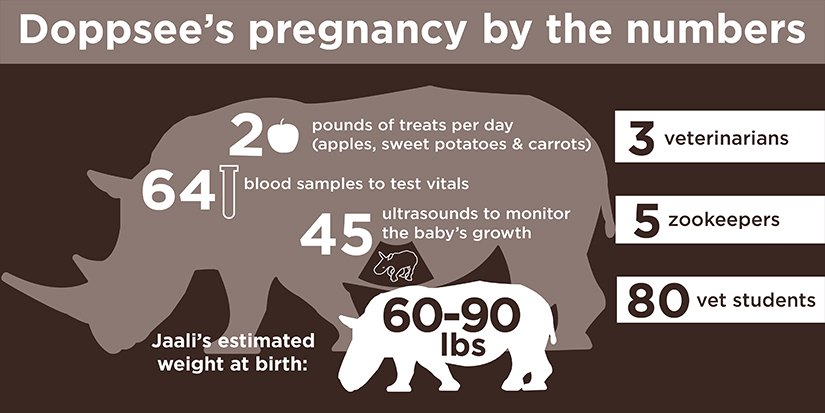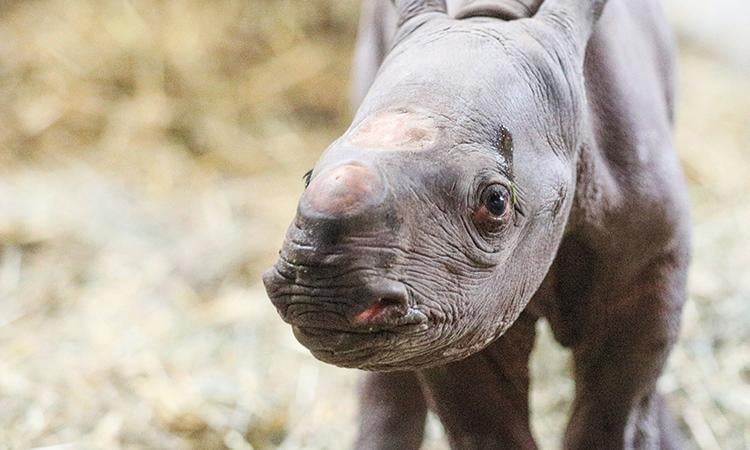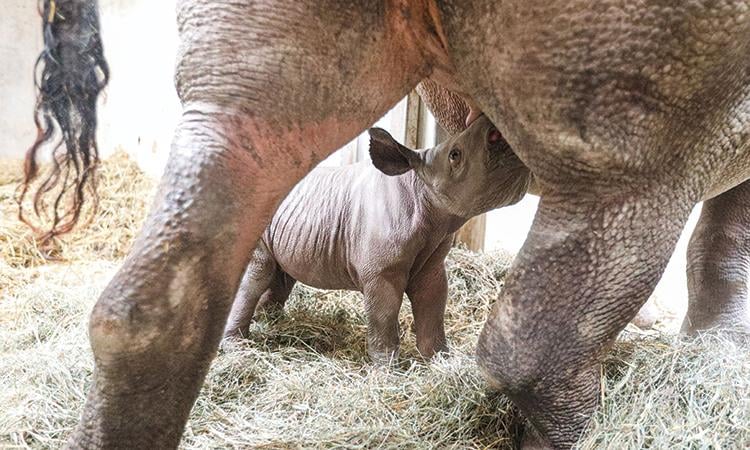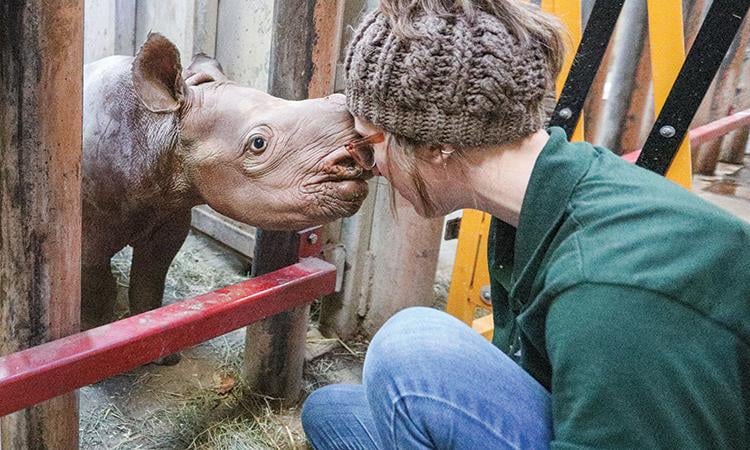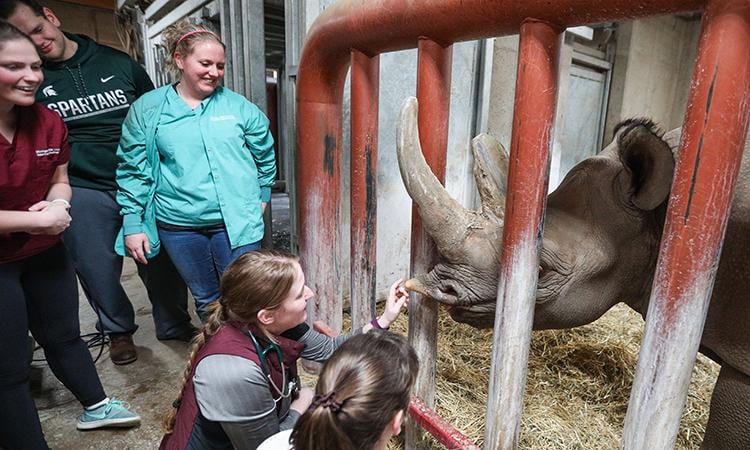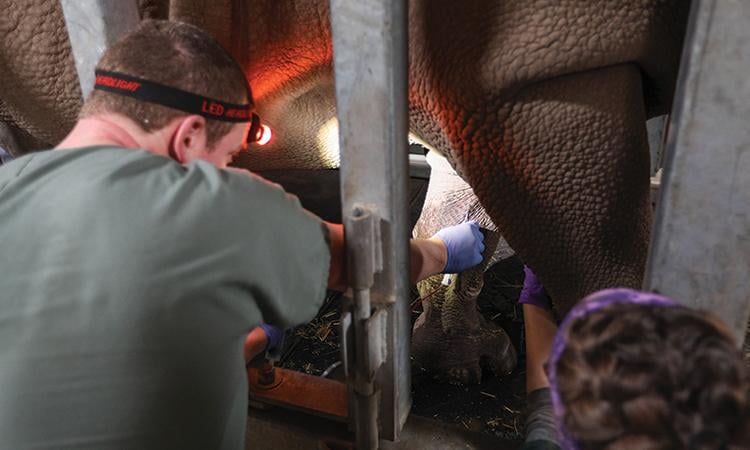The veterinarians and zookeepers monitored Doppsee and her fetus weekly, providing opportunities for MSU’s veterinary medical students to participate in a rare and extraordinary learning experience. Most importantly, they ensured that she and her baby calf were kept safe, happy and healthy.
“Being able to get this hands-on experience is invaluable to me, as Doppsee is a species I am not able to work with often, so this experience continues to help me learn more about what it means to be a veterinarian,” says Bridget Walker, a third-year veterinary medical student.
Ronan Eustace, adjunct professor at MSU’s School of Veterinary Medicine and director of animal health at Potter Park Zoo, mentored veterinary students during summer sessions and oversaw the regular visits.
“Dr. Eustace always welcomes us to bring as many students as we can to work with the animals at Potter Park Zoo,” says Strachota. “During one of our ultrasound examinations, one of the senior students commented that it was ‘the best day of veterinary school.’ What the zoo is doing for our veterinary curriculum is invaluable.”
Critical conservation effort
While important to the pregnancy, the ultrasounds and blood tests on Doppsee provided more than imaging of her baby. Black rhinoceroses are critically endangered, with fewer than 5,500 remaining in the wild and 60 in protected environments.
Doppsee carries valuable genetics in the captive population of eastern black rhinos. The more these genetics spread, the greater chance there is of preserving the global population of black rhinos.
With the help of Monica Stoops, lead scientist of Omaha’s Henry Doorly Zoo and Aquarium, zookeepers and veterinary staff were able to develop an understanding of Doppsee’s hormone levels, estrus cycle and behavior. Doppsee, and the valuable data gathered about her cycle and pregnancy, contributed to several research studies. These studies will provide valuable information on black rhino reproduction—information that cannot be obtained from wildlife populations.
“If we can maximize reproductive success in these captive populations, then they may become sustainable—and that’s the goal,” says Eustace.
